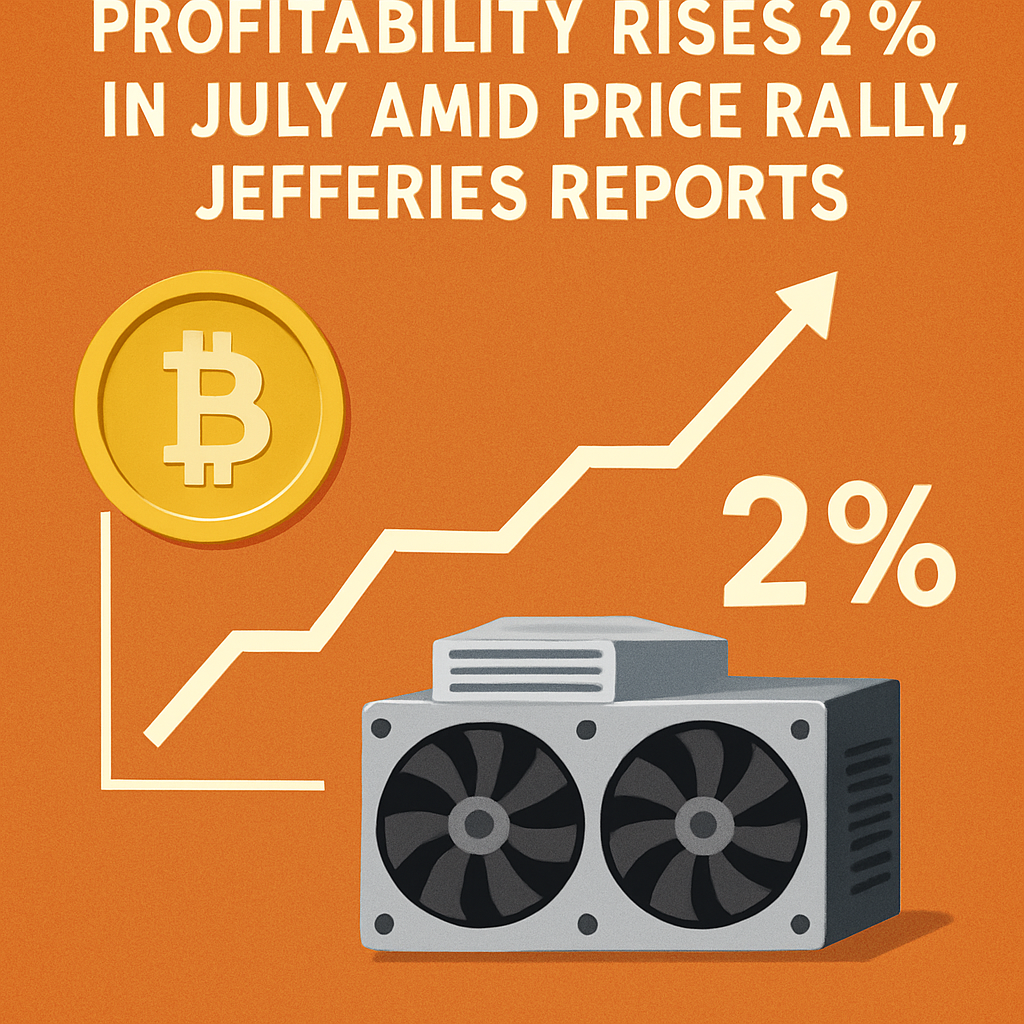Bitcoin mining profitability edged up 2% in July, driven by a 7% gain in BTC’s price juxtaposed against a 5% rise in the network hashrate. The net result was an improvement in revenue per exahash, favoring miners with highly efficient operations and access to low-cost energy sources.
Jefferies analyst Jonathan Petersen highlighted that U.S.-listed mining firms accounted for 26% of the global hashrate in July, up from 25% in June, reflecting the growing scale and capital allocation toward domestic mining ventures. Firms such as IREN (Iren Energy) and Marathon Digital Holdings (MARA) emerged as leading producers, mining 728 and 703 BTC respectively.
The report noted that a fleet generating one exahash per second (EH/s) would have produced approximately $57,000 in daily revenue throughout July, compared to $56,000 in June and $50,000 a year earlier. This sequential improvement underscores the positive impact of BTC price trends on miner economics.
CleanSpark (CLSK) maintained its position as the second-largest hashrate provider, delivering 50 EH/s, while Marathon leveraged its large-scale facilities to sustain leadership in overall production. The concentration of hashrate among top public miners continues to shape competitive dynamics and investment strategies.
Jefferies also pointed out that higher hashrate can lift infrastructure costs and elevate breakeven thresholds for smaller or less efficient operators. As the network difficulty adjusts to rising computational power, miners face pressure to optimize energy consumption and secure cost-effective power contracts.
Despite challenges, the favorable price environment in July provided a buffer that allowed marginal operations to remain profitable. The interplay between BTC price movements and operational efficiency continues to dictate margins, influencing decisions around capacity expansions and capital expenditures.
Looking ahead, miners are preparing for upcoming halvings and potential shifts in network incentives, with some exploring diversification into ancillary services such as hosting, staking, and data center management to supplement revenue.
Investors in listed mining companies are watching key metrics—revenue per EH/s and operational costs—as indicators of financial health. The July results illustrate that price momentum can outweigh incremental difficulty gains, at least in favorable market phases.
Overall, the 2% rise in profitability underscores the resilience of Bitcoin mining economics, provided BTC prices maintain upward trajectories. Strategic positioning in efficient and scalable operations remains pivotal for long-term sustainability.
The Jefferies report reinforces the view that, even amid rising hashrate, price rallies can deliver improved outcomes for miners, shaping sector investment and competitive strategy through the second half of 2025.

Comments (0)